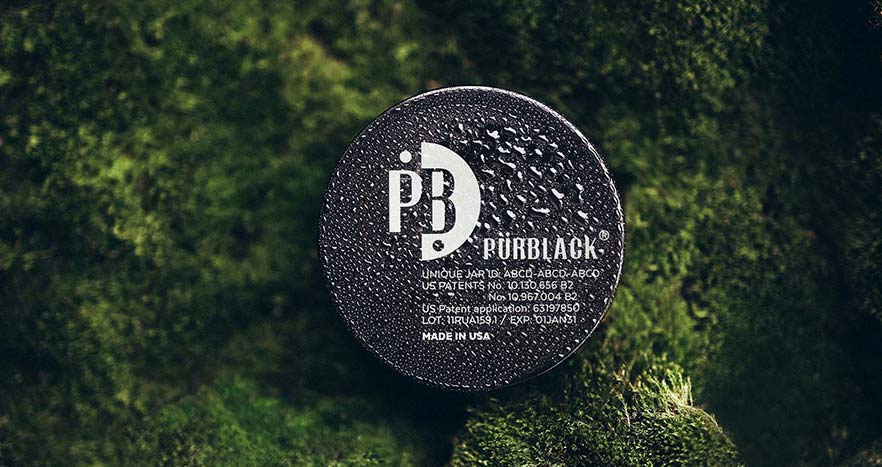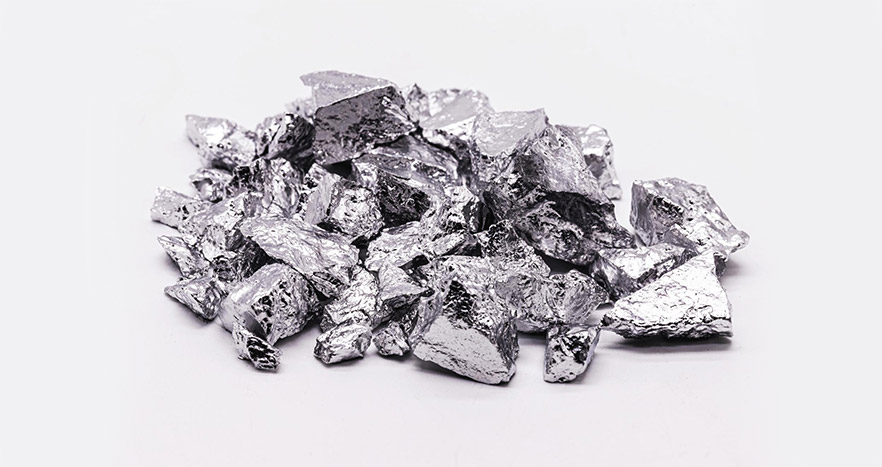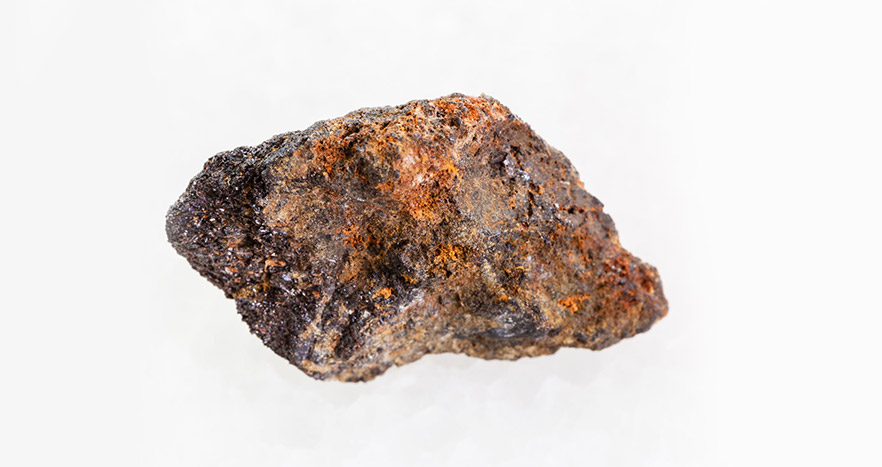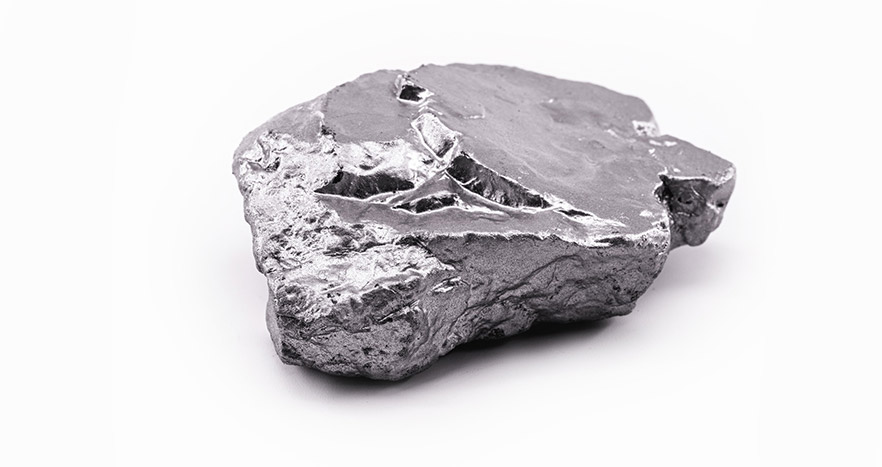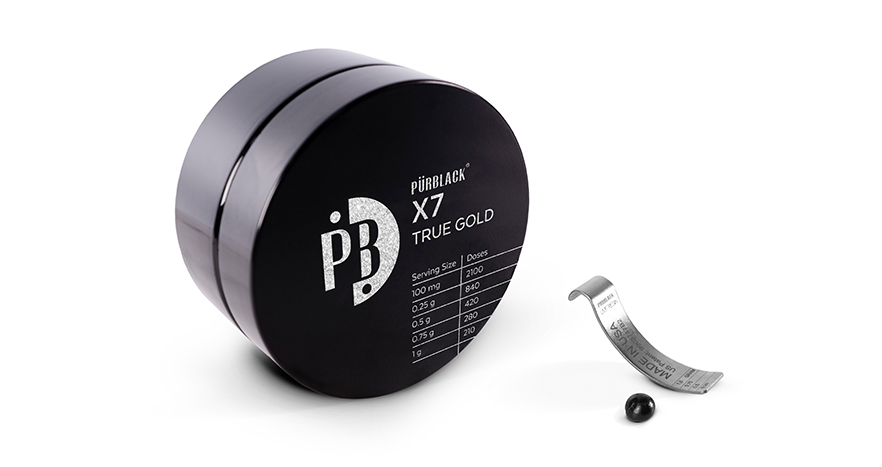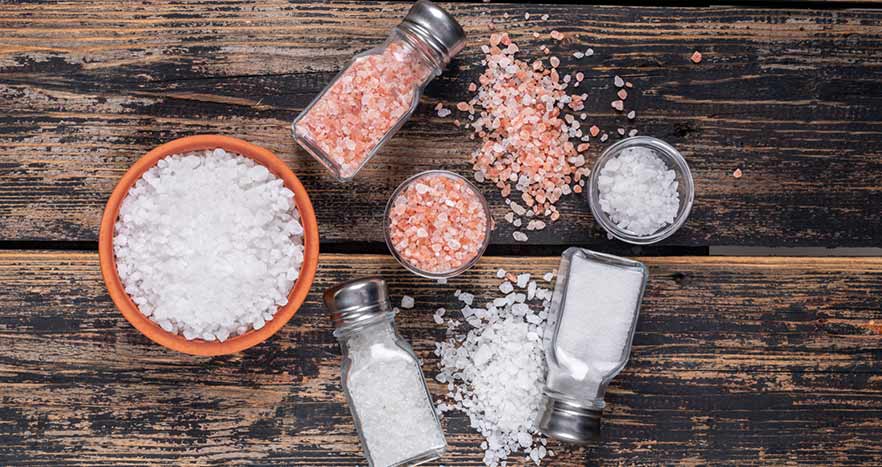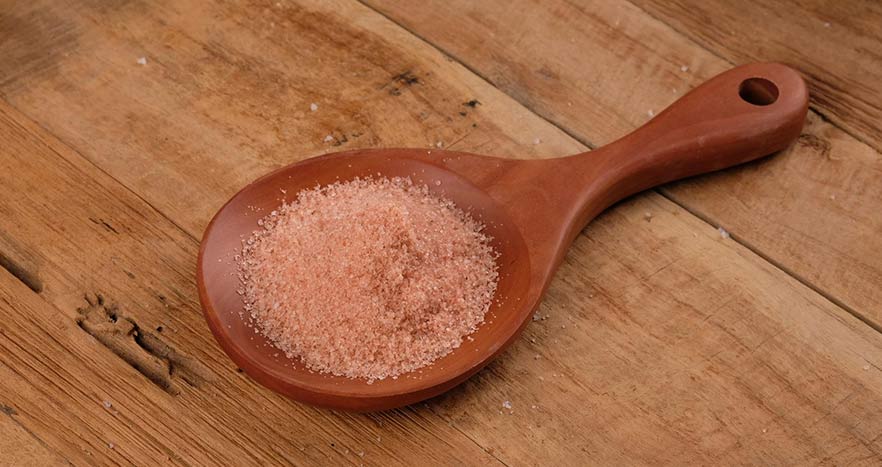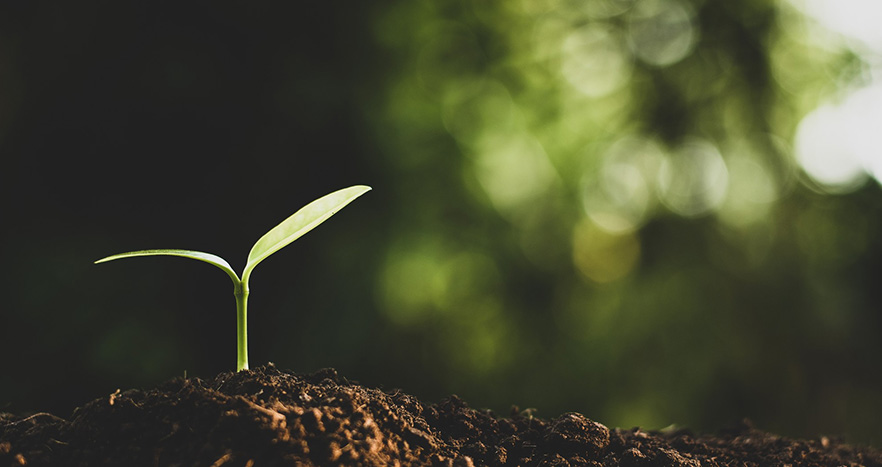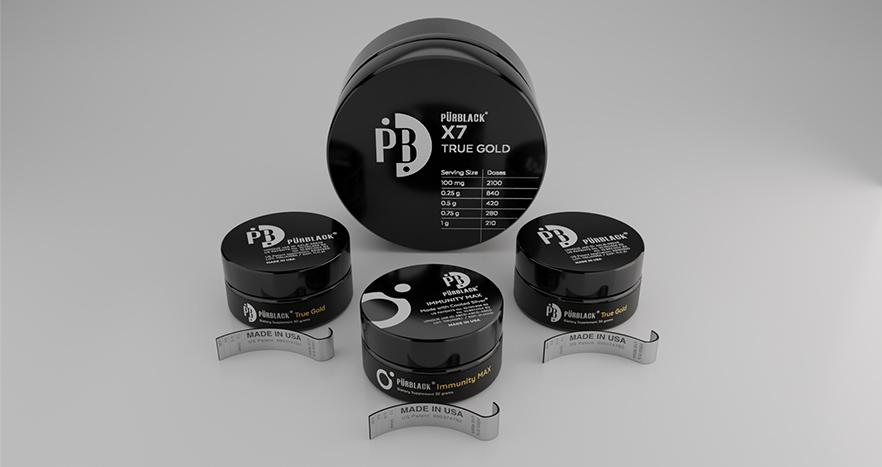In the US alone, households spend as much as $36.7 billion on dietary supplements [1]. Minerals in shilajit are among the most sought-after. And, why should you care?
Undernutrition is a growing global concern. The World Health Organization estimates that 462 million adults are underweight. Among children under 5 years old, undernutrition accounts for 45 percent of deaths [2] worldwide.
Although many developed countries are experiencing longer life expectancy, deficiency in essential trace minerals among older adults is hampering productivity. Researchers found a growing deficiency in selenium, copper, zinc, and iodine in this population segment [3]. All of which play critical roles in regulating vital body functions, including immune response.
Trace Minerals & Human Health
Food is so more abundant today than ever in the history of the human race. Sadly, the UN Food and Agriculture Organization estimates that 1.3 billion tons of food processed for human consumption are thrown away annually. That figure roughly equates to about a third of all food produced yearly. [4]
Although it is easy to derive trace minerals in food, sometimes the food source and the body’s absorptive capacity may cause issues. Diets that limit or exclude any food group usually contribute to micronutrient deficiency as well.
Other than poor eating and lifestyle habits, micronutrient deficiency is also being driven by the steadily decreasing nutrient value of food crops [5]. Experts blame overexploitation of the land as the root cause. Nutrients aren’t being replaced as rapidly as they are used up for agriculture. Excessive use of fertilizers and failure to practice crop rotation are other culprits.
In the end, the outcome is dismal. Low nutrient levels in food impact human health and quality of life.
What are trace minerals?
Trace minerals are often also referred to as “trace elements” or “trace metals”. These are nutrients present in the body in very minute quantities.
There are nine essential trace minerals. These are the ones vital for the normal functioning of the human body: chromium, copper, fluoride, iodine, iron, manganese, molybdenum, selenium, and zinc. Most of which may be derived from your diet. [6]
The human body requires minute amounts of these microminerals. Although, trace mineral deficiency can lead to catastrophic health issues. These trace minerals can be easily derived from commercial supplements. But, these are also among the list of minerals in shilajit, wildcrafted mineral pitch teeming with nutrients from the soil, and medicinal plants undergoing advanced stages of decomposition.
Is shilajit a great source of trace minerals?
Shilajit is considered as a treasure trove of nutrients. In ayurvedic, Chinese, and other traditional medical practice, it is often referred to as a rejuvenator. Premium value has been attached to it even in ancient times [7]. To this day, it is used as a critical part of holistic treatment and in achieving general wellness.
Shilajit formation may only happen when certain conditions are met. There remain several theories on the Nature and Origins of Shilajit, but we believe that shilajit is created from the interaction of the following: [8]
- Herbs and plants known to have medicinal value. Even though these botanical sources may be undergoing advanced stages of decay, many of their structural complexes remain alive and potent. These contribute to the adaptogenic properties of shilajit.
- Soil. Soil is rich in organic matter. It is mixed with minerals and heavy metals found in the immediate environment where shilajit is formed.
- Ideal environmental conditions. Pressure, temperature, altitude, slope, and direction are often considered when looking for shilajit bearing rock, the source of raw shilajit. Exposure of its precursors to extreme weather conditions are associated with its healing and rejuvenating properties.
Although shilajit can be extracted in many parts of the world, it can only be found in certain regions. Some of the well-known locations are the Himalayan, Altai, Ural, Caucasus, and Hindukush Mountains.
- Humification. It is also referred to as the second stage of soil formation following weathering. Humification is a complex process that involves interaction of biological and non-biological components. A vital sub-process involves breaking down decaying plant matter into soil organic material.
It takes at least 40 years for high quality shilajit to be naturally created between the crevices of rocks. Shilajit trace minerals vary depending on where the raw shilajit bearing rock was sourced. As such, one source may contain higher amounts of iron than other sources. On the other hand, one source may contain predominantly copper or manganese. In effect, pure and unadulterated shilajit may not be standardized. [9]
What trace minerals can be derived from shilajit?
All nine essential trace minerals may be derived from shilajit. But, shilajit mineral content is complex and highly variable depending on source.
Mineral deficiency can lead to adverse health effects. Minerals can be easily derived from food and so deficiency in pure trace minerals is generally rare. People don’t develop the condition overnight.
On the other hand, having too much of these trace elements in the body can result in side effects as well. Higher than normal levels can drive deficiency in other nutrients usually caused by poor absorption. Or, worse, these can lead to the development of other diseases.
Listed below are the nine essential trace minerals mentioned above. There are other trace minerals found in the body such as nickel, cobalt, vanadium, and silicon. However, their functional uses are still being explored and debated in the scientific community.
Shilajit may contain any or all of the essential trace minerals depending on where it was sourced. Take note that the Recommended Dietary Allowance for each one may vary based on ethnicity. Differences among males and females, weight, build, and daily activities are usually considered in determining individualized values as well.
Chromium
Chromium complements insulin in regulating blood sugar levels. It also helps the body to access energy from sugar.
Chromium deficiency can lead to unregulated blood sugar levels. In turn, this contributes to the development of diabetes and other chronic diseases. It is a contributing factor in developing obesity as well.
Globally, more than 1.9 billion or approximately more than a third of the world’s entire adult population are overweight. About a third of them are obese. Obesity also affects at least 38 million children under five years old. [10]
Too much chromium in the body can cause kidney and liver damage. [11]
Nuts, liver, whole grains, and cheeses are some of the top food sources of chromium.
Copper
Characterized to be a key driver in the evolution of life itself, copper enables a long list of biochemical processes inside your body. Copper is a catalyst of several mechanisms. It reacts with proteins and helps power up cells. It also makes iron more readily available for the body, and supports the production of healthy red blood cells.
Copper is a vital component of enzymes. Enzymes regulate mechanisms that keep the body functioning like a well-oiled machine. Copper also assists in the healthy functioning of neurotransmitters. It also acts as an antioxidant and protects cells from the damaging action of free radicals.
Copper deficiency may compromise proper regulation of body processes and contribute to the development of anemia. Low levels of copper in the body can cause muscle weakness, fatigue, nerve damage, and osteoporosis. [12, 13]
Too much copper in the body may cause a condition known as Wilson’s disease. People diagnosed with it show an accumulation of copper in the brain and liver. This indicates failure of the body to metabolize and excrete copper.
Legumes, nuts, seeds, drinking water, shilajit and wholefoods are all rich sources of copper.
Fluoride
This trace mineral is necessary to build strong and healthy teeth and bones. Too much fluoride, however, may cause teeth and bones to weaken. Excess fluoride has also been associated with spurs or abnormal bone growth on the spine. [14]
Fluoride in drinking water is the most common source. The application of fluoride on teeth is another.
Iodine
Most of the iodine in the body is concentrated in the thyroid gland. The thyroid produces hormones that are vital in regulating growth and development, as well as the metabolism process.
Slower rates of metabolism can give rise to obesity, diabetes, cardiovascular diseases, and other chronic diseases. Iodine deficiency can cause goiter, thyroid, and hormone problems. [15]
Food sources rich in iodine include shellfish, shrimp, fish, salt, and bread.
Iron
The human body requires iron for many reasons. Its most important role is in the production of hemoglobin. Red blood cells are able to dissolve oxygen and transport it around the body because of hemoglobin. Iron and oxygen support normal cell functioning and vitality.
Iron deficiency can cause a lower than normal count of red blood cells. In turn, it causes anemia. It can also lead to other signs and symptoms that include hair loss, tiredness, shortness of breath, and heart palpitations. It may also decrease blood oxygen supply levels and contribute to the development of heart disease. [16]
A hereditary condition known as hemochromatosis causes a person to store excessive levels of iron in the body. High levels of iron can lead to liver and kidney damage. It can also contribute to the development of diabetes.
Foods rich in iron include red meat, organ meat, eggs, beans, and cocoa.
Manganese
Like copper, manganese is also a key precursor in the production of enzymes. It reacts with amino acids to unlock energy. It also helps the body derive energy from carbs and fats.
Manganese also aids in bone formation and repair. It also supports the production of a powerful natural antioxidant known as manganese superoxide dismutase. Thus, it plays a vital role in shielding cells from free radicals. It also speeds up wound-healing.
Manganese deficiency causes brittleness of the bones and lower bone density. It may also be a contributing factor in the development of diabetes.
Too much manganese decreases iron absorption that can lead to anemia and other blood-related disorders. People suffering from renal disorders should refrain from supplementing with manganese. They have a harder time metabolizing and excreting excess amounts. This can lead to more health issues, including reproductive disorders and stunted growth. [17]
Vegetables, fruits, and root crops are outstanding food sources of manganese.
Molybdenum
This trace mineral plays a key role in your body’s much-needed upkeep. It helps metabolize toxins, including sulfites, and aids in eliminating these from the body. Molybdenum is also a key precursor in the formation of enzymes.
Molybdenum deficiency is rare. Documented cases of molybdenum deficiency and inability to process it showed affected individuals experienced seizures, cognitive impairment, and coma. [18]
High amounts of molybdenum in the system have been associated with gout. It may also negatively affect the level of copper in the body. Available studies, however, remain inconclusive. [19]
Beans, grains, bread, leafy greens, milk, and organ meat are the best source of molybdenum.
Selenium
Just like molybdenum, selenium also gives the body a much-needed detox. It helps break down hazardous elements, including mercury and arsenic. Other than that, it also serves as a precursor in the production of the antioxidant, glutathione peroxidase. It is a natural antioxidant that adds a layer of protection that shields cells from free radicals.
Selenium deficiency has been associated with an increased risk of developing cardiovascular diseases. Some studies have also suggested that low levels of selenium increase a person’s cancer risk. Although, evidence remains inconclusive. [19]
High levels of selenium cause bad breath, hair loss, teeth discoloration, skin rashes, and disorders of the nervous system. [20]
It’s easy to obtain selenium from the diet. It can be derived from all kinds of animal meat, including fish and shellfish. Beans, nuts, and eggs are also wonderful sources of selenium.
Zinc
Zinc is intricately related to essential cellular level functions. It supports cellular repair, replication, and metabolism. Zinc also serves as a precursor of a long list of enzymes that regulate the most vital body processes that make life and living possible.
Zinc deficiency can lead to retarded growth and delays in sexual development. Worse, low levels of zinc may lead to impotence in men. It can also cause loss of appetite, compromised immune response, and severe hair loss. [21]
On the flip side, excessive levels of zinc can compromise your body’s immune response, drive copper deficiency, and increase your risk of developing cardiovascular diseases.
Meat, fish, shellfish, and whole grains are great sources of zinc.
Beyond Trace Minerals: Other Beneficial Components in Shilajit
A critical part of Manufacturing Genuine Shilajit is choosing the source. Unfortunately most shilajit marketers take “source” to mean only the location where shilajit or mumie is extracted.
Very few manufacturers commit valuable resources to actually subject mumie samples to rigorous laboratory tests. These steps are used to check for the presence of desirable shilajit components. That is, substances that can potentially level up consumer health and wellness. That includes macronutrients, trace elements, and other bioactive ingredients.
Macrominerals
Just like trace minerals, these may all be derived from your diet. However, due to the same reasons that cause deficiencies in essential trace minerals, some people may have lower levels of these macrominerals in their bodies. Shilajit minerals include both macromineral and trace minerals. As such, regular intake of shilajit may also be helpful.
Calcium
This nutrient is what makes up our bones and teeth. It builds the structural support of our bodies. It also holds our muscles in place and promotes proper nerve function.
Calcium deficiency leads to osteoporosis and other musco-skeletal disorders. However, too much calcium can lead to hypercalcemia. This disease is characterized by excessive amounts of calcium in the blood. Over time, the condition weakens the bones and promotes the formation of kidney stones. [22]
Milk, cheese, and other milk products are rich sources of calcium. Broccoli, tofu, and beans are other great food sources.
Chloride
This mineral is vital in achieving electrolyte balance throughout the body. Attaining a proper balance of chloride also promotes normal levels of stomach acid. Thus, it also supports gut health.
Chloride deficiency can be temporary. It’s often caused by massive fluid loss, such as when vomiting or suffering from diarrhea. On the other hand, too much chloride can upset the balance of biochemical reactions in your body. It supports the formation of kidney stones.
Salt is the primary source of chloride for the body. Other common food sources are soy sauce and a wide variety of processed foods.
Magnesium
It supports bone formation, tissue repair, and muscle contraction. It also aids proper coordination and supports healthy immune response.
Magnesium deficiency causes fatigue and weakness. Prolonged deficiency in this mineral causes chronic cramping and abnormal heartbeat. When taken excessively, magnesium can lead to severe toxicity, coma, and death.
Natural food sources include leafy greens, nuts, and seafood.
Phosphorus
Phosphorus helps supply cells with sufficient energy to function properly.
Phosphorus deficiency is associated with abnormal mental states and psychological disorders. It can lead to severe confusion as well as increased risk for infections. There is no conclusive evidence to show that high amounts of phosphorus in the body can lead to any chronic disorder or disease.
Yogurt, milk, salmon, scallops, chicken, and cheese are some of the best food sources for this mineral. [23]
Potassium and Sodium
Together, these two minerals set the cellular balance. Sodium and potassium regulate the amount of fluid that enters the cell membrane at any time. Neurotransmitters and muscle contraction are influenced by these minerals as well.
Potassium deficiency causes high blood pressure and increases risks for heart attack and stroke. [24] Meanwhile, sodium deficiency is highly unlikely and possible only under special medical conditions. [25]
Sulfur
Rounding up the shilajit minerals list is sulfur. Sulfur is a precursor of some of the most vital amino acids in the body. For instance, it supports the synthesis of cysteine, an amino acid that serves as a key component in the production of collagen.
There is some evidence that suggests too much sulfur can lead to brain damage and significant decrease in antioxidant protection. However, the evidence remains debatable. [26]
Nuts, beans, fish, and poultry are some of the best sources of sulfur.
Humic and Fulvic Acids
These two are better known as the major components of soil. Mineral-rich fulvic and humic acids are soil precursors. These are formed from decaying organic matter from dead plants. This is one way by which vitamins and minerals in shilajit are folded in.
Humic and fulvic acids act as media by which nutrients essential for living organisms are recycled back into the soil [27]. Later, plants, acting as producers, will use these nutrients to make food. The energy in food then finds its way back into the food chain.
Phyto Complex, Lignin, and Other Plant Components
Phyto complex refers to phytochemicals or phytonutrients from plants. Phyto may help increase the bioavailability of nutrients from plants, and humic and fulvic acids. Higher bioavailability means that these nutrients become more accessible for the human body.
Lignin constitutes most of the structural support of plants. Lignin protects the plant from environmental stressors [28].
Lignin may render the same protective functions for humans. It is, in fact, the subject of several studies on its potential use for medical purposes. There’s early evidence it may be useful for cancer treatment. [29]
Dibenzo-α-pyrones
These are metabolites naturally formed in soil with the help of decomposers. Dibenzo-α-pyrones support proper cell functioning and vitality by boosting energy levels. It enhances the bioavailability of adenosine triphosphate (ATP). ATP is the human body’s energy currency.
Dibenzo-α-pyrones also act with coenzyme Q10 abundant in healthy cells to provide a protective antioxidant function. [30, 31]
The Whole of Shilajit
The minerals, bioactive components, and vitamins in shilajit will vary depending on the quality of the source and location. [32]
Unlike synthetic supplements, shilajit live resin is not constituted by one or a few active ingredients. It is the complex hodge-podge of nutrients and bioactive constituents that make it uniquely beneficial in restoring and sustaining health and wellness. All of which are involved in a complex web of interactions and reactions that help make each one useful for your body’s protection and recovery.
So, next time you hear an ad about shilajit that highlights fulvic acid only, you know better.





